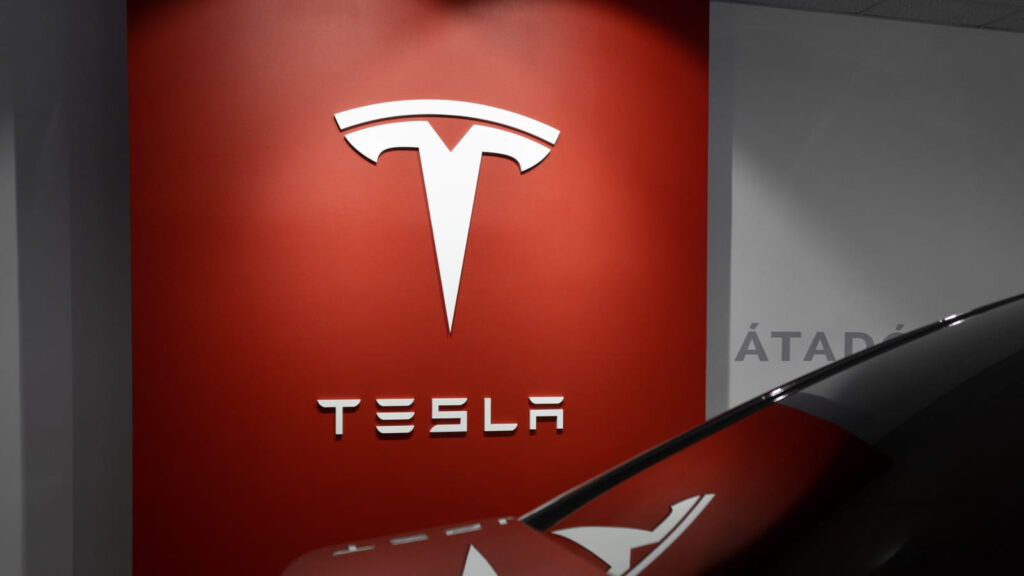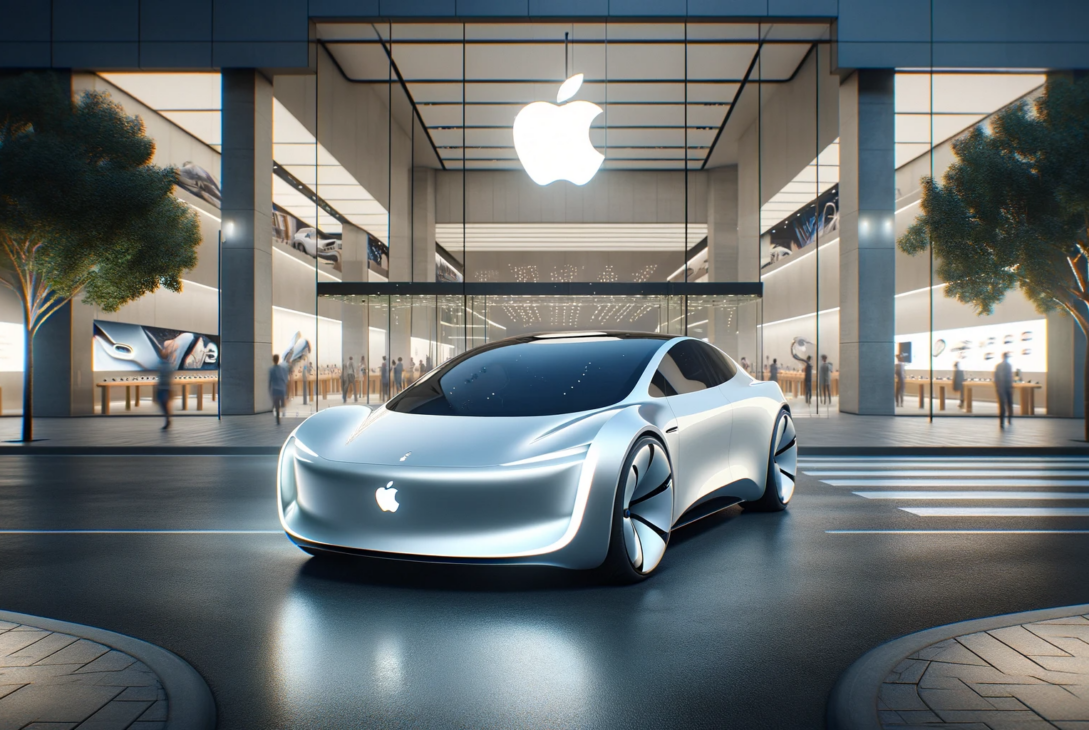Explore the groundbreaking entry of Apple into the electric vehicle market with the anticipated 2028 launch of the Apple Car. This comprehensive article delves into the implications of Apple’s innovation on the EV landscape, particularly its impact on industry leader Tesla, and the future of sustainable, smart mobility.
In a move that has sent ripples across the automotive and technology industries, Apple, a titan in consumer electronics, has officially announced its entry into the electric vehicle (EV) market. Slated for a 2028 debut, the Apple Car represents a bold step for the Cupertino-based giant, known for its innovation and market disruption. This announcement not only signifies Apple’s expansion beyond its traditional product lines but also marks a new chapter in the evolving narrative of electric vehicles.
Apple Car: A Blend of Technology and Mobility
The Apple Car, emerging from the much-speculated Project Titan, is expected to be a culmination of Apple’s prowess in design, technology, and user experience. While specific details about the car’s features remain closely guarded, it is anticipated to boast a range of cutting-edge technologies, aligning with Apple’s reputation for high-quality, user-centric products. However, recent reports suggest a scaling back of some of its autonomous driving capabilities, indicating a more cautious approach to the complex challenges of self-driving technology.
Impact on the Electric Vehicle Landscape
Apple’s entry into the EV market is not just a significant milestone for the company but also a moment of reckoning for existing players in the field. The announcement has particularly resonated within the corridors of Tesla, the current frontrunner in the electric vehicle industry. Tesla, led by the visionary Elon Musk, has been at the forefront of the EV revolution, championing not only the shift towards sustainable transportation but also the integration of advanced technologies like autonomous driving.
Apple vs Tesla: A New Competitive Dynamic
The impending arrival of the Apple Car introduces a new competitive dynamic in the EV market. Apple’s brand loyalty, extensive ecosystem, and financial resources position it as a formidable contender. Tesla, on the other hand, brings to the table its pioneering role in the EV space, a deep understanding of the market’s nuances, and a proven track record of innovation. The face-off between these two giants is poised to accelerate advancements in EV technology, design, and consumer appeal.
Technological Innovations and Consumer Expectations
One of the key battlegrounds in this new era of electric vehicles will be technological innovation. Apple’s track record of transforming industries through technology suggests that the Apple Car will push the boundaries of what is currently possible in EVs. This includes advancements in battery technology, user interface, connectivity, and perhaps a unique take on autonomous driving, despite the recent scale-back. Consumers, accustomed to the high standards set by Apple in other product categories, will have lofty expectations for the Apple Car, anticipating a vehicle that seamlessly integrates into the Apple ecosystem.
Tesla’s Response and Market Adaptation
Tesla’s response to Apple’s entry will be closely watched by industry observers and consumers alike. Known for its agility and willingness to innovate, Tesla may accelerate its own advancements in response to Apple’s challenge. This could manifest in various forms, from improvements in Tesla’s already impressive battery technology and autonomous driving capabilities to enhancements in vehicle design and user experience.

The Broader Implications for the EV Industry
Beyond the direct competition between Apple and Tesla, the introduction of the Apple Car has broader implications for the electric vehicle industry. Apple’s entry could serve as a catalyst for increased consumer interest and adoption of EVs, helping to shift public perception and increase acceptance of electric vehicles as a viable alternative to traditional combustion engines. Additionally, Apple’s involvement may spur further innovation and investment in the sector, as other automotive manufacturers and technology companies seek to keep pace.
Challenges and Opportunities Ahead
However, the road ahead for Apple is not without its challenges. The automotive industry, with its complex supply chains, regulatory requirements, and safety considerations, presents a different landscape from what Apple has navigated in the consumer electronics sector. Moreover, the company’s decision to scale back certain autonomous driving features reflects the technical and regulatory hurdles associated with self-driving technology.
Evolving Consumer Expectations and Market Dynamics
The announcement of the Apple Car has not only stirred excitement but also raised consumer expectations to new heights. In a market where innovation is relentless, Apple’s reputation for creating intuitive and elegant products sets a high bar. Consumers will likely anticipate a vehicle that not only excels in performance and sustainability but also redefines the driving experience through seamless integration with digital lifestyles. This shift in consumer expectations will compel other EV manufacturers, including Tesla, to elevate their offerings, leading to a market rich in innovation and variety.
The Synergy of Technology and Automotive Expertise
Apple’s venture into electric vehicles is not merely about adding another product to its portfolio; it represents a fusion of technology with automotive engineering. This synergy is crucial, as the future of EVs lies not just in electrification but in smart mobility solutions. Apple’s expertise in software, AI, and user interface design, combined with automotive engineering, could lead to breakthroughs in areas like advanced driver-assistance systems (ADAS), in-car entertainment, and vehicle-to-everything (V2X) communication. The challenge for Apple will be to integrate these technologies while adhering to the stringent safety and reliability standards of the automotive industry.
Tesla’s Role in Shaping the Future
Tesla’s role in this evolving landscape cannot be overstated. As a pioneer in the EV market, Tesla has set benchmarks in vehicle range, charging infrastructure, and driver-assistance technology. Tesla’s ongoing innovations in battery technology and energy efficiency continue to push the limits of what electric vehicles can achieve. With Apple entering the fray, Tesla may double down on its strengths while also exploring new areas of innovation to maintain its competitive edge.
The Ripple Effect on the Automotive Industry
The entry of a tech giant like Apple into the EV market is likely to have a ripple effect across the entire automotive industry. Traditional car manufacturers, already transitioning to electric models, may feel the pressure to accelerate their EV strategies and embrace more advanced technologies. This could lead to increased partnerships between tech companies and automakers, as both sectors seek to leverage each other’s strengths. The result could be a faster pace of innovation, with advancements in electric powertrains, autonomous driving, and connected car technologies.
Challenges in Supply Chain and Manufacturing
One of the significant challenges Apple will face is in the realm of manufacturing and supply chain management. Unlike consumer electronics, the production of vehicles requires a complex and robust supply chain, capable of handling large components and complying with various regulatory standards across different regions. Apple will need to establish strong partnerships with suppliers and possibly even consider manufacturing facilities dedicated to the Apple Car. This aspect of the venture will test Apple’s operational prowess in a new and challenging domain.
Regulatory Hurdles and Safety Standards
Navigating the regulatory landscape of the automotive industry is another hurdle for Apple. The company will need to ensure compliance with a myriad of safety and environmental regulations, which vary significantly across different countries. Additionally, if Apple intends to incorporate autonomous driving features in the future, it will have to contend with the evolving regulatory framework surrounding self-driving vehicles, which is still in its nascent stages in many regions.
Sustainability and Environmental Impact
As the world grapples with climate change, the environmental impact of vehicles is under increasing scrutiny. Apple’s foray into EVs aligns with a broader shift towards sustainable transportation. However, the environmental footprint of manufacturing electric vehicles, including battery production and disposal, remains a concern. Apple’s commitment to sustainability in its other products sets expectations for the Apple Car to be not only an emblem of innovation but also a standard-bearer for environmental responsibility.
The Road Ahead: A New Chapter in Mobility
The introduction of the Apple Car is poised to open a new chapter in the story of mobility. It’s not just about another electric vehicle entering the market; it’s about the convergence of different technologies and industries to redefine what a vehicle can be. As Apple, Tesla, and other players chart their courses in this evolving landscape, the beneficiaries will be the consumers and the environment. The competition will drive faster advancements in EV technology, making electric vehicles more accessible, efficient, and integrated into our digital lives.
Conclusion
In conclusion, the arrival of the Apple Car in 2028 is more than just the launch of a new product; it’s a catalyst for change in the automotive industry. It challenges existing players like Tesla to innovate further and compels the entire industry to rethink the future of mobility. As we look towards this future, one thing is clear: the journey of electric vehicles is about to get more exciting, and the impact of this shift will resonate far beyond the automotive sector, heralding a new era of sustainable, smart, and connected mobility.




